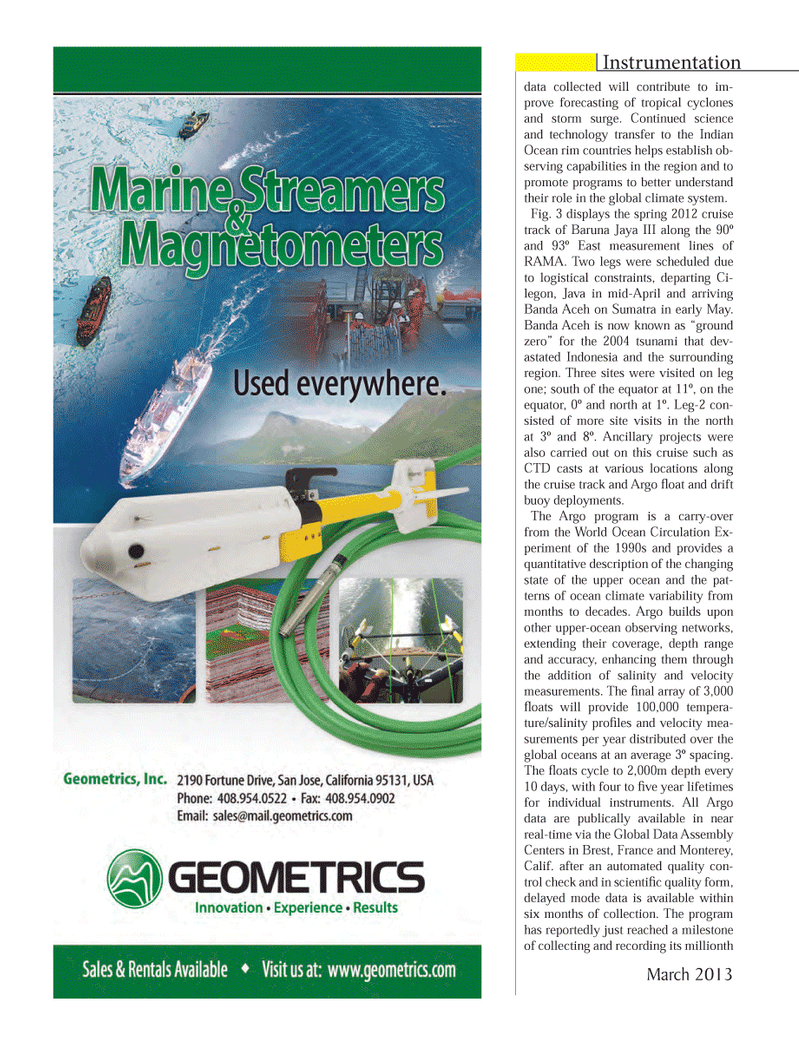
Page 28: of Marine Technology Magazine (March 2013)
Instrumentation: Measurement, Processing & Analysis
Read this page in Pdf, Flash or Html5 edition of March 2013 Marine Technology Magazine
data collected will contribute to im- prove forecasting of tropical cyclones and storm surge. Continued science and technology transfer to the Indian Ocean rim countries helps establish ob-serving capabilities in the region and to promote programs to better understand their role in the global climate system.Fig. 3 displays the spring 2012 cruise track of Baruna Jaya III along the 90º and 93º East measurement lines of RAMA. Two legs were scheduled due to logistical constraints, departing Ci-legon, Java in mid-April and arriving Banda Aceh on Sumatra in early May. Banda Aceh is now known as ?ground zero? for the 2004 tsunami that dev- astated Indonesia and the surrounding region. Three sites were visited on leg one; south of the equator at 11º, on the equator, 0º and north at 1º. Leg-2 con- sisted of more site visits in the north at 3º and 8º. Ancillary projects were also carried out on this cruise such as CTD casts at various locations along the cruise track and Argo oat and drift buoy deployments. The Argo program is a carry-over from the World Ocean Circulation Ex- periment of the 1990s and provides a quantitative description of the changing state of the upper ocean and the pat-terns of ocean climate variability from months to decades. Argo builds upon other upper-ocean observing networks, extending their coverage, depth range and accuracy, enhancing them through the addition of salinity and velocity measurements. The nal array of 3,000 oats will provide 100,000 tempera- ture/salinity pro les and velocity mea- surements per year distributed over the global oceans at an average 3º spacing. The oats cycle to 2,000m depth every 10 days, with four to ve year lifetimes for individual instruments. All Argo data are publically available in near real-time via the Global Data Assembly Centers in Brest, France and Monterey, Calif. after an automated quality con-trol check and in scienti c quality form, delayed mode data is available within six months of collection. The program has reportedly just reached a milestone of collecting and recording its millionth Instrumentation March 2013 MTR #2 (18-33).indd 28MTR #2 (18-33).indd 283/5/2013 4:09:15 PM3/5/2013 4:09:15 PM

 27
27

 29
29
